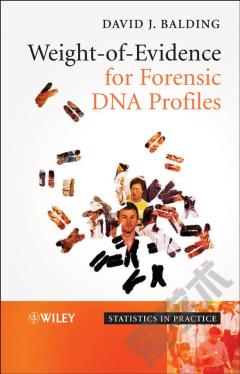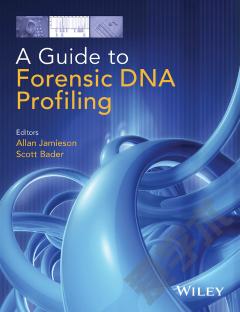Weight-of-Evidence for Forensic DNA Profiles
Preface.1. Introduction.1.1 Weight-of-evidence theory.1.2 About the book.1.3 DNA profiling technology.1.4 What you need to know already.1.5 Other resources.2. Crime on an island.2.1 Warm-up exercises.2.2 Rare trait identification evidence.2.3 Making the island problem more realistic.2.4 Weight-of-evidence exercises.3. Assessing evidence via likelihood ratios.3.1 Likelihood ratios.3.2 The weight-of-evidence formula.3.3 General application of the formula.3.4 Consequences for DNA evidence.3.5 Some derivations.3.6 Further weight-of-evidence exercises.4. Typing technologies.4.1 STR typing.4.2 mtDNA typing.4.3 Y-chromosome markers.4.4 X-chromosome markers.4.5 SNP profiles.4.6 Fingerprints.5. Some population genetics for DNA evidence.5.1 A brief overview.5.2 O, or FST.5.3 A statistical model and sampling formula.5.4 Hardy-Weinberg equilibrium.5.5 Linkage equilibrium.5.6 Coancestry.5.7 Likelihood-based estimation of O.5.8 Population genetics exercises.6. Identification.6.1 Choosing the hypotheses.6.2 Calculating the likelihood ratios.6.3 Application to STR profiles.6.4 Application to haploid profiles.6.5 Mixtures.6.6 Identification exercises.7. Relatedness.7.1 Paternity.7.2 Other relatedness between two individuals.7.3 Software for relatedness analysis.7.4 Inference of ethnicity or phenotype.7.5 Relatedness exercises.8. Other approaches to weight of evidence.8.1 Uniqueness.8.2 Inclusion/Exclusion probabilities.8.3 Hypothesis testing.8.4 Other exercises.9. Issues for the courtroom.9.1 Bayesian reasoning in court.9.2 Some fallacies.9.3 Some UK appeal cases.9.4 US National Research Council reports.9.5 Prosecutor's fallacy exercises.10. Solutions to exercises.Bibliography.Index.
{{comment.content}}








 京公网安备 11010802027623号
京公网安备 11010802027623号